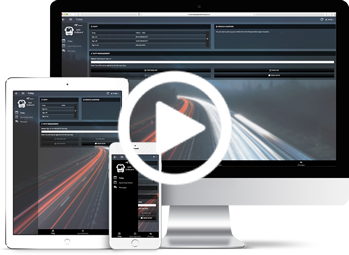UK Conference 2020
Demand Responsive RecapThe Flex World: Delivering Mobility when Door to Door is no More
Watch the Full Session
The world of DRT (Demand Responsive Transport) was changing before anyone had even heard of Covid-19, but in its wake, DRT has been catapulted years into the future.
In this session, Edward Reece, Stephen Rainbow & Josh Mellor explored how recent developments will promote the role of “Flex”, which essentially blurs the previously clear lines between DRT and traditional fixed route services.
The team explained how DRT, historically viewed largely as an alternative form of mobility, now has huge potential to transform mainstream mobility, empowering people to manage their journeys.
Digital familiarity is a key enabler of this movement: people today use Smartphones to undertake a multitude of everyday activities, including shopping, ordering essential documents, and more. We can empower people to manage their DRT mobility in the same way – but we must make it simple and intuitive to do so.
If DRT is to expand to meet upcoming gaps in the mobility network, one important element may be to move away from door to door mobility. This will have the result of reducing costs while also making it possible to transport more people.
But this kind of transformational change can only happen if DRT is truly efficient. As the team explained, this requires four crucial essential elements: passenger self-service, dynamic scheduling, real-time digital driver communications, and real-time passenger information.
With such elements, DRT has the ability to expand to fill the gaps in the transport network. Trapeze is exploring how to facilitate this with new functionality developed within PASS, including the ability to implement fixed aspects to within routes in terms of locations and times, enabling authorities to operate flex services alongside traditional DRT.
‘Demand Scheduling’ and the Role of DRT for Commercial Operators
In this session, we heard from Trapeze’s Gavin John, a solution product manager and experienced bus scheduler who now works with Trapeze’s commercial team and their UK bus operator customers.
Gavin outlined the growing overlap between traditional DRT (Demand Responsive Transport) and the emerging concept of ‘demand scheduling’ within bus operators, explaining that bus companies are increasingly attracted to the potential in demand-based operations.
Gavin explained that his team has been exploring the potential for implementing flexible elements within traditional bus routes in order to remove dead miles, thereby reducing fuel and staff costs – as well as carbon emissions, of course.
This concept was recently presented to Trapeze’s commercial operator clients at a similar event, and we were delighted to see that it resonated strongly with the audience, with 75% of attendees indicating that they saw a requirement for such services.
Explaining how ‘demand scheduling’ will work in practice, Gavin outlined a scenario where passengers go to a bus station and use an interactive display to summon their bus (and pay in advance). The system would then dynamically adapt the route in real-time, adjusting headways and feeding data to mileage and KPI systems.
In addition, Gavin’s team is also now exploring the potential for ‘full flex’ routes, where passengers are empowered to manage their entire journey via an app, selecting their pickup and drop off points as required.
Watch the Full Session
DRT Retrospective: How Customers Helped the Country Through Lockdown
Watch the Full Session
In 2020, with ridership hugely impacted by Covid-19, DRT providers all over the world have worked hard to adapt services to support the vulnerable in their local communities.
Interestingly, while there have been many common approaches (we have heard of a number of organisations using DRT to deliver food and other essentials) in some regions there have been tales of innovative new ways to use technology to adapt to unexpected challenges.
In one memorable example, Trapeze’s taxi customer, RTA in Dubai, has used vehicles sensors such as cameras to enforce limits passenger numbers in vehicles, and also to ensure that masks are being worn by both passengers and drivers.
The team also found ways to use technology to enforce such rules, including by preventing the meter from starting, thereby ensuring the breach is addressed before service goes ahead. This has the benefit of ensuring safety regulations are adhered to, while removing the requirement for the driver to act as a rule ‘enforcer’.
Session Presenters

Josh Mellor
Account Manager

Edward Reece
Senior Implementation Specialist

Stephen Rainbow
Senior Technical Specialist

Gavin John
Product Manager
Other Sessions from Around the Conference
Demand Response Transport
Rides on Demand
Global Taxi Perspectives
Product Roadmap
Novus Solutions
Covid-19: Returning to a New Normal
Business Intelligence & KPIs
Update on TfL’s Adiona
Contracts & Subsidies
Product Roadmap
Bus Open Data
Schools Transport
Introducing Circle
Developer Story – Scheduling
Challenges in the Market
Business Intelligence & KPIs
Schools Roadmap
Planning Around Covid-19
Customer Service Desk Updates
Responding to Covid-19 and Improving Value
Customer Care Changes
Building on Feedback
(c) 1999 – 2020 Trapeze Software ULC. All rights reserved
Trapeze Group respects your privacy

